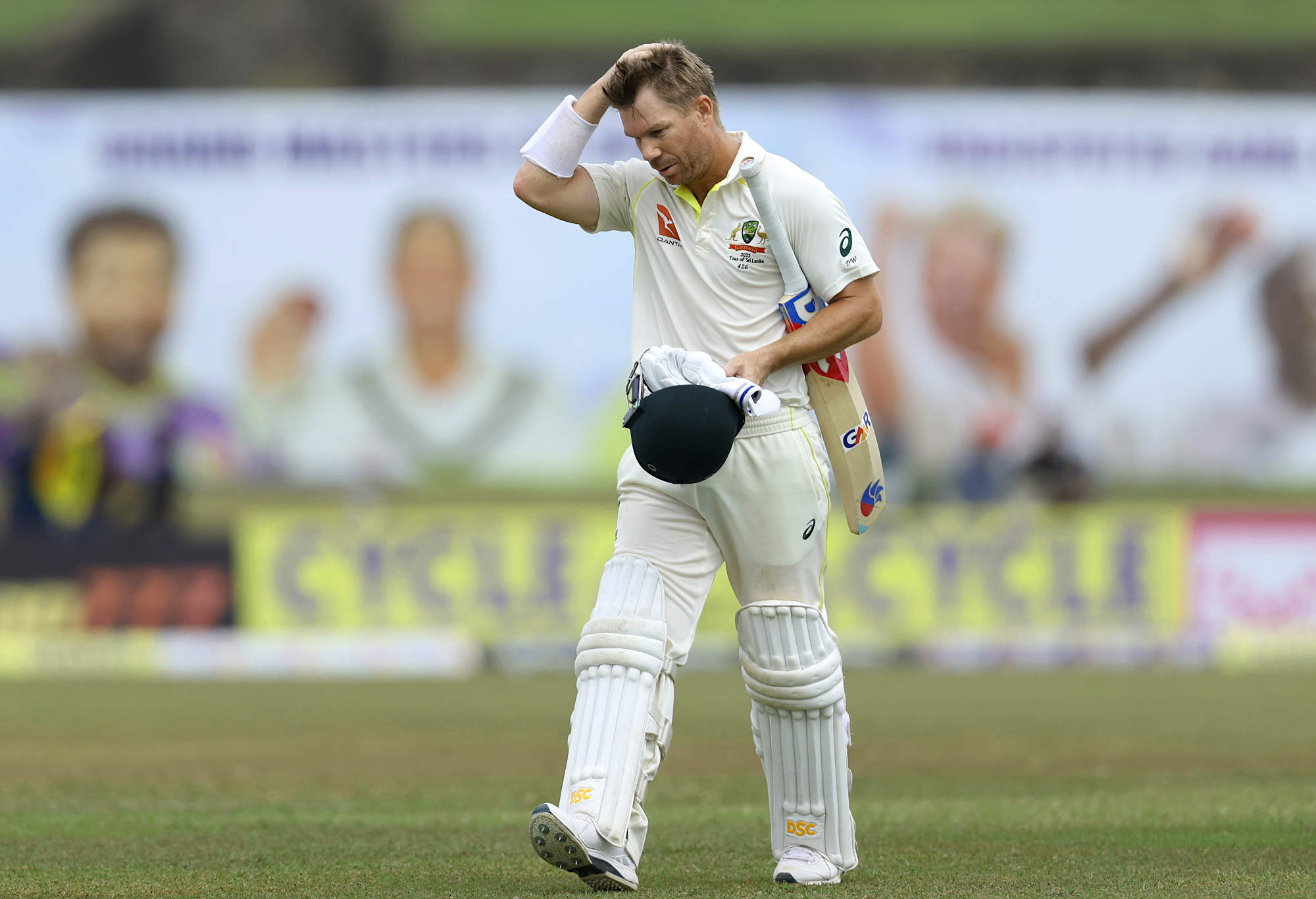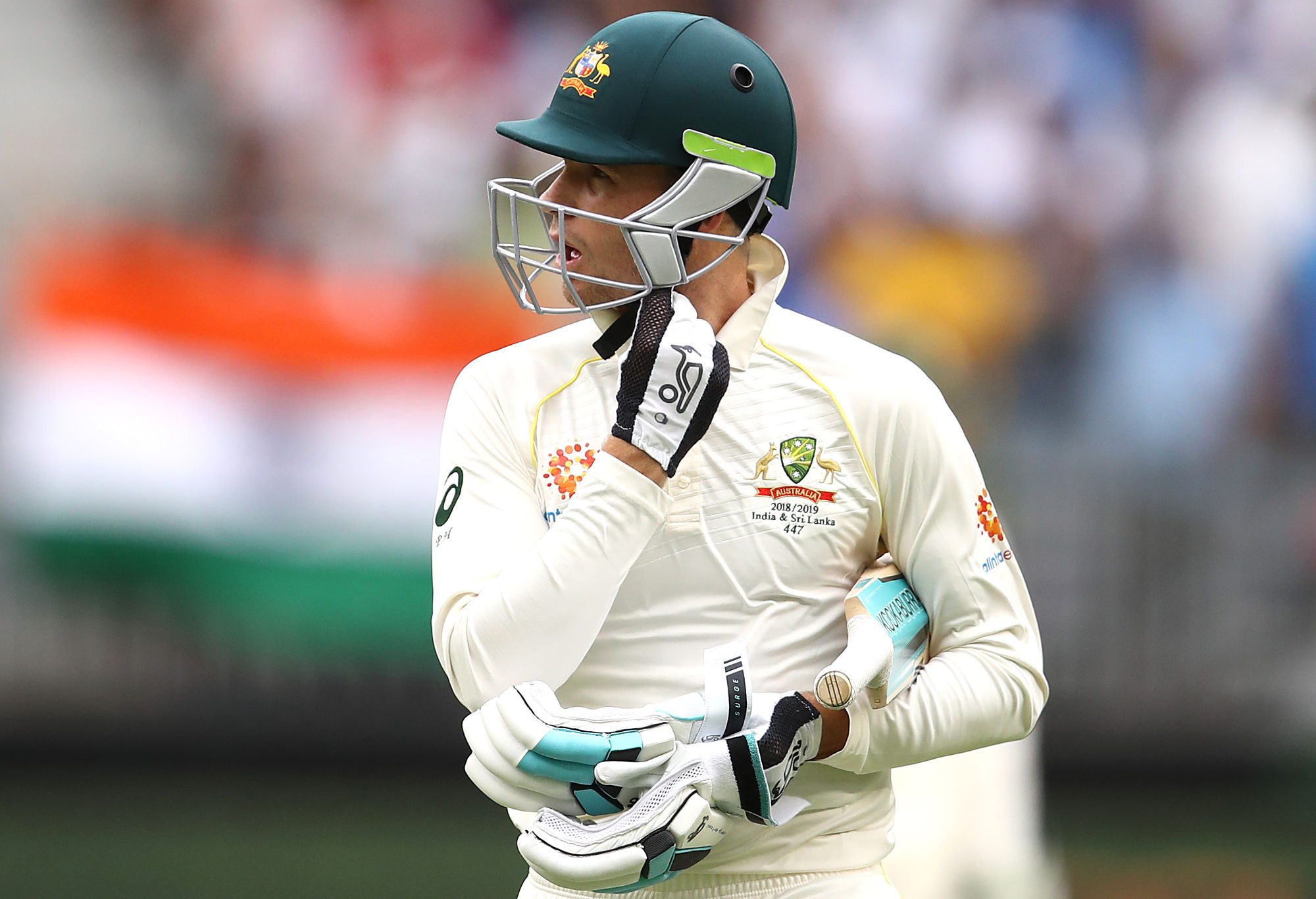With 15 Tests on the horizon within the next seven months, the Australian team faces a gruelling task to achieve their ultimate goal of becoming world champions.
A squad mentality will be needed as the team traverses a range of locations, pitches and opponents starting with the West Indies next Wednesday in Perth.
After two games against the Windies, they’ll host South Africa for three matches, head to India in February for four more and if all goes to plan, line up for the World Test Championship final at The Oval before finishing their marathon schedule with an Ashes tour.
Australia are on top of the WTC table ahead of South Africa, with Sri Lanka, India and Pakistan the only other serious threats to finish in the top two.
CLICK HERE for a seven-day free trial to watch international cricket on KAYO
The selectors could use around 20 players over that stretch as injuries, form, differing conditions and opponents come into play.

Pat Cummins. (Photo by Darrian Traynor – CA/Cricket Australia via Getty Images)
Of the likely XI that will take the field at Optus Stadium next week, captain Pat Cummins, batting mainstays Marnus Labuschagne and Steve Smith and veteran spinner Nathan Lyon are the only players who would be automatic selections for the full 15 Tests if available unless their form dramatically drops off.
Over the past decade, the Australian men’s team has dished out 36 baggy green caps to debutants but only 12 of them have played more than 10 Tests with only Josh Hazlewood (57) and Mitch Marsh (32) racking up 30 matches.
Position by position, here’s how the Australian team is looking heading into a bumper program.
Openers
David Warner has just turned 36 and Usman Khawaja will do likewise next month so they are very much in the twilight of their decorated careers. Warner has indicated he may retire from Tests within the next 12 months and with no centuries in his past 21 innings at an average of 28.65, he needs runs in the home Tests against the Windies and Proteas to ensure he can go out on his own terms.
Tasmanian left-hander Tim Ward (369 at 52.71) is emerging as a player to watch, Cameron Bancroft has two tons this summer but is unlikely to get another recall while WA teammate Sam Whiteman (345 at 43.12) has also been a consistent scorer in the Shield ranks.

(Photo by Buddhika Weerasinghe/Getty Images)
South Australia’s Henry Hunt has shown he can occupy the crease, Marcus Harris is the shadow batter in the Test squad after 288 runs at 41.14 this summer for Victoria while Queensland’s Matt Renshaw is also knocking on the door for a recall four years after his last appearance for Australia after his recent unbeaten double-century against NSW.
Knocks of 81 and 101 not out for the PM’s XI for Renshaw should vault him ahead of Harris, who scored 73 and five in the same game, on the pecking order for next opener to get a chance.
Middle-order
Labuschagne and Smith will occupy the first two slots while Travis Head is again under pressure to shore up the No.5 position he looked to have cemented with a couple of tons in last year’s 4-0 Ashes rout. Head made just 91 runs from his past five Tests at 15.17 in Pakistan and Sri Lanka and his troubles against spin will be a major concern for the trip to India unless he can strike form in the lead-up.
Victoria’s Peter Handscomb is the in-form batter among the Shield ranks with 544 at a Bradmanesque average of 108.8, including 281 not out against Western Australia and a 132 in Adelaide.

Peter Handscomb. (Photo by Ryan Pierse/Getty Images)
Handscomb averaged 38.91 in his 16 Tests from 2016-19. Both his hundreds came in Asia against Pakistan but his record in India was poor – 303 runs in seven Tests at 25.25 so he also has questions surrounding his ability to face top-level spinners.
He enhanced his claims with 55 and 75 in the PM’s XI game in Canberra.
There are not many other in-form options among the middle-order specialists as ball has dominated bat in the first couple of months of the season. Glenn Maxwell’s attempt to return to the Test equation after three years out of first-class cricket came to an abrupt halt when he broke his leg last week.
Blues skipper Kurtis Patterson and Western Australia’s Hilton Cartwright have brief Test experience and could re-emerge into the selection frame if they can convert more of their starts into triple-figure tallies.
Wicketkeeper
Alex Carey has done enough over the course of his first 10 Tests, averaging 32.21 and for the most part being tidy behind the stumps. There are few concerns about his batting and he’s viewed as a leader in the team so as long as he keeps glovework errors to a minimum, he could play all the matches over the next seven months.
Josh Inglis would be next cab off the rank while Queensland’s Jimmy Peirson is an elite gloveman who belted a hundred last month against Tasmania. Peirson is 30 so selectors may consider Inglis, three years his junior, the better option as a player of the future if Carey were to be unavailable.

Cameron Green and Alex Carey. (Photo by Buddhika Weerasinghe/Getty Images)
All-rounder
Cameron Green has the talent to have this position for as long as keeps performing as he’s done in his first 14 Tests in scoring 723 at 36.15 while bagging 16 wickets at 32.12. If he keeps on this upward trajectory, the sky is the limit for the 23-year-old to finally give Australia a world-class all-rounder.
But the Tests in India in particular could prompt the selectors to switch him out for a spinning option like Ashton Agar if they don’t want to drop one of the big three fast bowlers in Cummins, Mitchell Starc and Josh Hazlewood.
While not viewed as a traditional all-rounder, Queensland veteran Michael Neser is another left-field option at No.7 with Carey upgraded a slot after averaging 47 in the Shield this season for Queensland, including a polished 136 against NSW last month, while also being the competition’s leading wicket-taker with 24 scalps at 11.83.
Spinner
Lyon has been toiling away for NSW in Shield, sending down 105 overs for eight wickets at 37.5, to head into the Test schedule with plenty of game time under his belt.
Queensland’s Mitchell Swepson is pencilled in as the second spin option for India after taking 14 wickets in his first four Tests at Pakistan and Sri Lanka.
Agar could jump the queue due to his greater speed through the air and accuracy while Todd Murphy’s 3-27 in the Prime Minister’s XI clash with the Windies was an eye-catching performance.
It even caught the eye of former Graeme Swann because the young Victorian’s action is very similar to the retired English tweaker.
West Australian off spinner Corey Rocchiccioli is turning heads with his 16 wickets this Shield season at 26.31, including eight wickets in the win over NSW this week, but is probably a year away at least from an international call-up.
Fast bowlers
The big three can’t go on forever. Surely. They’re already starting to fray at the seams a bit in the white-ball arena – well, Cummins and Starc’s form has dipped, Hazlewood could be 80-90% cyborg at this stage.
Hazlewood only played two of the past 10 Tests due to a side strain and unfavourable conditions in Asia meaning he was deemed surplus to requirements.
Should the selectors look to rest Starc for a couple of Tests at home to save him for the Indian tour and frontload Hazlewood’s workload in home conditions where he’s suited best?
Neser deserves another chance at Test level after an encouraging debut last summer in Adelaide while Queensland teammate Mark Steketee is in the selection panel’s thoughts after he was part of the touring party to Pakistan and he’s kicked on with 23 wickets in four games in the Shield arena.

(Photo by Quinn Rooney/Getty Images)
Australia’s embarrassment of pace riches means Scott Boland is also no guarantee to get another Test anytime soon despite his astounding Ashes haul of 18 wickets at the barely believable average of 9.55.
The wild card is Jhye Richardson, who started the Shield season with a flurry of wickets but has been sidelined by a heel injury. His ability to swing the red ball at pace means he could be a strong candidate for the Ashes tour, particularly given not many of the English batters would be too familiar with the 26-year-old speedster.
It’s not quite an endless summer ahead for the Australia team but at least 14, potentially 15, matches, it will be a true Test of stamina.
The Australians do not play another T20 match during that time frame while their only ODIs will be three at the end of the Indian tour.
Red-ball focus: Australia’s upcoming schedule
NOVEMBER-DECEMBER: Two Tests v West Indies (home)
DECEMBER-JANUARY: Three Tests v South Africa (home)
FEBRUARY-MARCH: Four Tests and three ODIs v India (away)
JUNE: World Test Championship final (in England)
JUNE-JULY: Five Tests v England (away)
AUGUST-SEPTEMBER: Five ODIs and three T20s v South Africa (away)
SEPTEMBER: 3 ODIs v India (away)
OCTOBER-NOVEMBER: ODI World Cup, nine matches plus finals (in India)
>Cricket News

%20(3).jpeg)






0 Comments